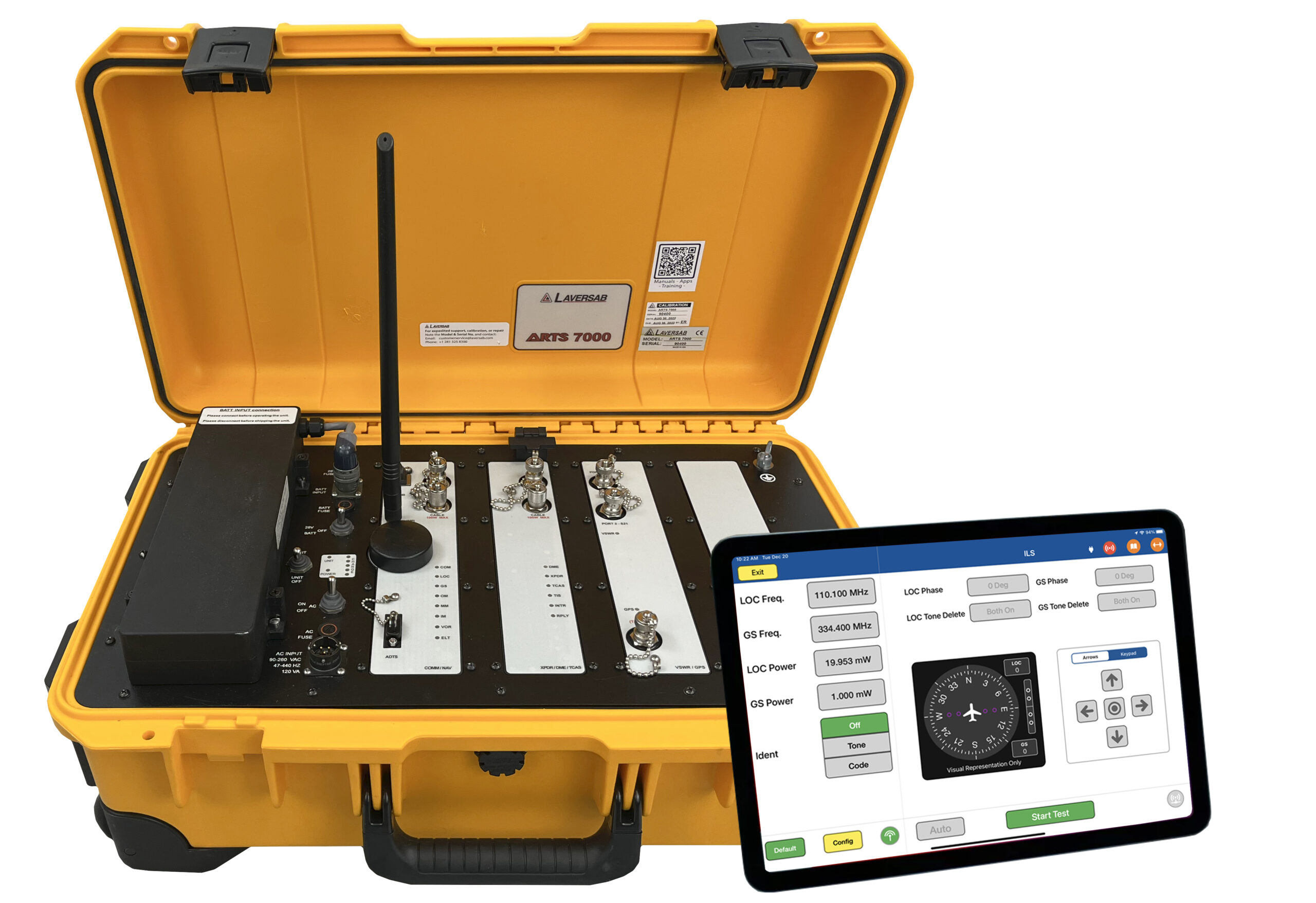How to Test Your Avionics Systems
Avionics test equipment is vital for manufacturing, developing, and maintaining commercial, private, and military aircraft systems. An important function performed by this equipment is making sure they are able to function in an emergency. For those looking for information on how to test emergency location transmitters (ELTs) and traffic collision avoidance systems (TCAS), keep on reading!
Laversab Aviation offers a variety of innovative testing solutions that ensure safe flying conditions, including a multifunctional all-in-one product known as the Laversab Avionics Radio Test System (ARTS) 7000. One of the key attributes of the ARTS-7000 is that it is designed to meet all aircraft radio test requirements in a single unit. Along with ELTs, standard tests include radio communication, navigation, distance measuring equipment (DME), Mode S, and automatic dependent surveillance – broadcast (ADS-B). Optional tests, aside from TCAS, is user acceptance testing (UAT).
Whether from inside the cockpit or around the aircraft, the ARTS-7000 can be controlled wirelessly via a simple yet intuitive touch-screen interface. In addition, the unit is built to reduce upfront costs, simplify aircraft testing, and cover current and future avionics radio test requirements.
Standard ELT Tests
ELTs, or emergency location transmitters for short, are standard avionics test equipment that are onboard all U.S.-registered civil aircraft, including general aviation aircraft. In the event of an aviation accident, ELTs transmit a high-frequency distress signal on 121.5 and 243.0 MHz frequencies. This signal may be automatically activated upon impact or it may be manually activated by the pilot or aircraft personnel using the remote switch and control panel indicator in the cockpit.
So how does one test an emergency location transmitter? An ETS test using the ARTS-7000 should only be conducted during the first five minutes after any hour,with a maximum of three audio sweeps of the transmitter. If operational tests must be made outside of this period, they should be coordinated with the nearest FAA Control Tower. The ELT system should be tested in accordance with manufacturer’s instructions, which will usually include verifying the code and using a system tester. The remote control should be switched through each mode of operation in order to confirm that the ELT is operating correctly.
Optional TCAS Tests
A traffic collision avoidance system, also known as traffic alert and collision avoidance system or TCAS, is an aircraft collision avoidance system whose primary function is to reduce the incidence of mid-air collisions (MAC) between aircraft. TCAS accomplishes this by monitoring the airspace around an aircraft in search for other aircraft equipped with a corresponding active transponder independent of air traffic control. TCAS is mandated for use in the U.S. for commercial aircraft with more than 30 seats or a maximum takeoff weight greater than 33,000 lbs.
The ARTS-7000 includes a pulse antenna that can be used for all test functions relating to the pulse module, including TCAS testing. Here is how the antenna is used to test TCAS: it is mounted on a tripod in order to allow convenient positioning. This antenna is designed to be highly directional and, as such, careful alignment between the ARTS 7000 antenna and the antenna of the aircraft system being tested under test antenna is required.
For more information about the ARTS-7000 and other avionics test equipment, contact Laversab Aviation today!
-
Avionics Radio Test Set: ARTS-7000
The Laversab ARTS-7000 is a multifunction all-in-one Avionics Radio Test System – ARTS. It is designed to meet all aircraft radio test requirements in a single unit. The ARTS-7000 is controlled wirelessly – whether from inside the cockpit or around the aircraft. It is controlled via a simple yet intuitive touch-screen interface. The ARTS-7000 is built to reduce upfront costs, simplify aircraft testing, and cover both current & future radio test requirements.
Standard tests: Radio Communication, Navigation, Distance Measuring Equipment, Mode S, ADSB, Emergency Location Transmitters
Optional tests: TCAS, UAT, GPS
The ARTS-7000 is user configurable and expandable to meet future avionics requirements. It is built to test any airborne platform, including General aviation, Commercial airliners, helicopters, and military applications.
